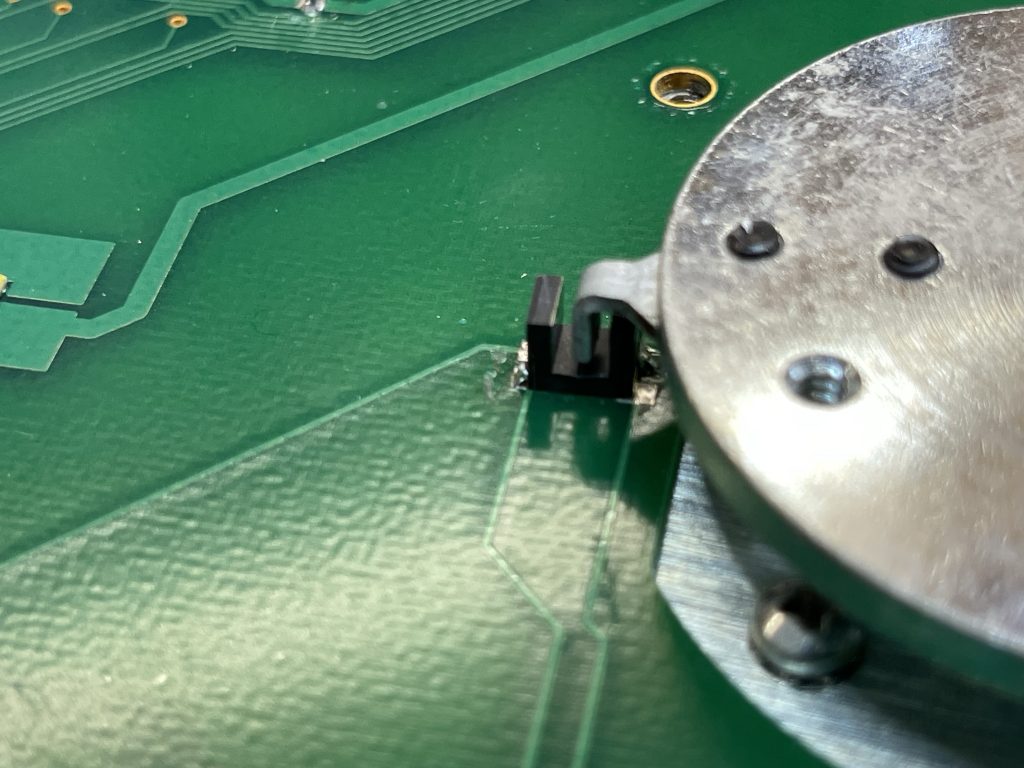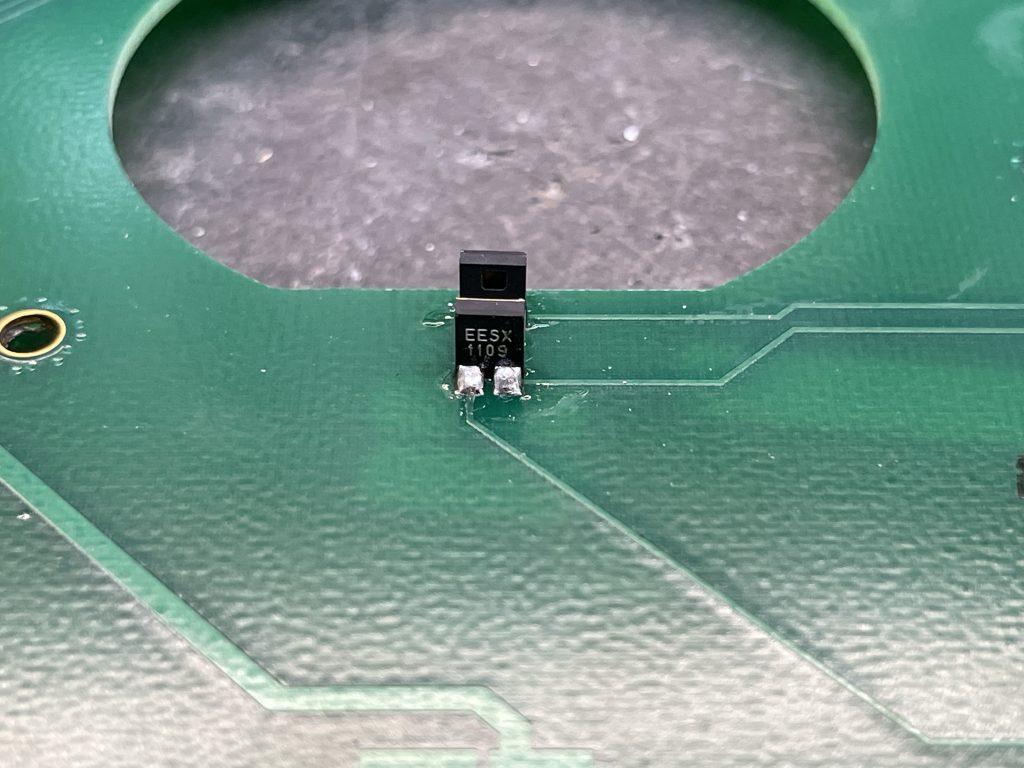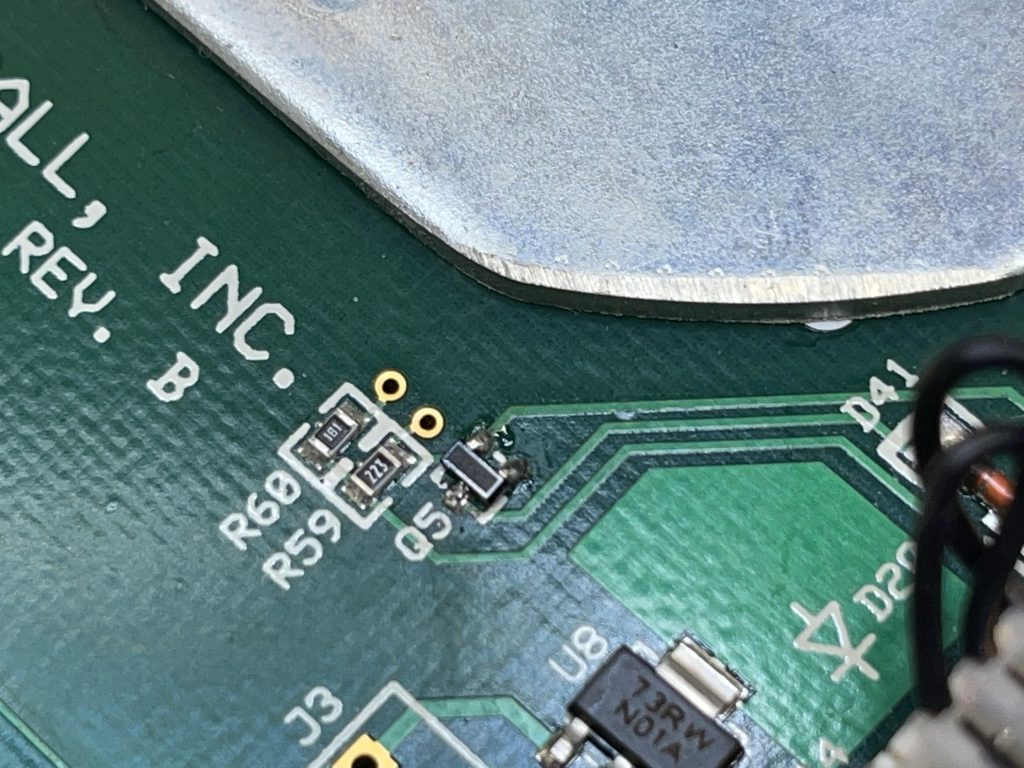I can’t say I remember the last time a saw Stern’s Wheel of Fortune pinball, but it’s been a while that’s for sure.
A few weeks ago Todd gets a beautiful home use-only game traded in. The manuals were still stapled to the inside of the cabinet. I always recommend to people who buy new-in-the-box games to leave everything stapled inside unless you *really* need it.
I guess in some way it preserves that new feeling. At least it prevents anything from getting lost.
Other than one drop target (DT) not working and the wheel not finding home, this game is perfect. Todd ordered some new drop target optos which solved the drop target issue.
Troubleshooting that was easy, all you have to do is move the plug to an adjacent drop target since they are individually wired. If you’re getting a message that the DT in question is now reading in test mode, you know everything from the plug back is good. If it isn’t, then you have more troubleshooting to do.
Before I had a chance to even look at anything on the wheel, Todd assumed the wheel opto was bad and ordered a new one from Marco Specialties. It came a few days later and I was asked to install it. Unfortunately, everything on the wheel PCB is surface mount, and the opto is no exception.
It’s not particularly difficult to change, it’s just connected by four solder points. Getting to it is another thing since the wheel hub blocks one side of the solder points. We weren’t able to get the hub off the shaft so I had to disassemble everything else around it.


Fortunately, the hole in the board is big enough so I could “hourglass” the board from the motor/hub assembly. I swapped in the new opto, let’s see if it will work.
Nope, didn’t work. So the next thing to do is see if I can “trick” the game into thinking the wheel is finding home.
The circuit for the wheel opto is simple as you can see in the schematic below. The board looks complicated but most of the components are for light control and addressing.

Looking at the schematic you can see that +5 volts comes in, feeds power to light the LED on opto 1, and hold the gate of Q5, a BSS123 transistor, high through R59. It also feeds the collector of the transistor on opto 1. When the light beam is broken by the wheel position tab, the transistor allows the gate of Q5 to go low completing the switch circuit telling the game that the wheel found home. When the transistor in the opto is turned on by blocking the light beam, it allows the current to drain to ground, pulling the gate of Q5 low, completing the switch circuit.
Opto 1 works via a light beam that controls the base of the transistor by switching it on and off. The LED is always on so there’s always light hitting the base of the transistor. The opto is activated by something interrupting the beam. In this case, it’s done by the tab on the wheel hub.
The optos on the playfield that are on the ramps and such work the same way, when the ball passes through and interrupts the beam, it tells the game the ball did something that may require adding points, completing or starting a mode, or whatever.

I didn’t get a better picture of D41 and R58, but you can see them behind the black wires sticking out from the connector. You can also see where the traces connect them to Q5. With the game powered on and the wheel looking for home, all I had to do was short D41 and R58. The wheel stopped and the game thought all was well.
That leaves only one thing. Replace Q5. I ordered a few of them since they were only like 40 cents each. They came within a few days and I carefully put a new one in.


Now for the moment of truth. I put the wheel back in and anxiously turned the game on.
SUCCESS! The wheel immediately found home! I put the game into test mode and verified the wheel worked correctly. During the test, the wheel will find home, then the game will tell you the next spot it will stop such as Trip, 500,000, etc.
With everything working correctly I could finally reinstall the wheel into the game.
Todd and I shot some video of this. That’s why I didn’t post on Sunday. Check it out below….
I hope you found this educational, informative, and will maybe help you figure out a problem with your game.
’till next time, Frank

Be the first to comment